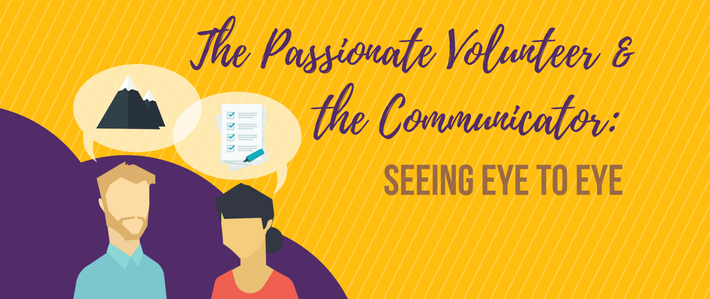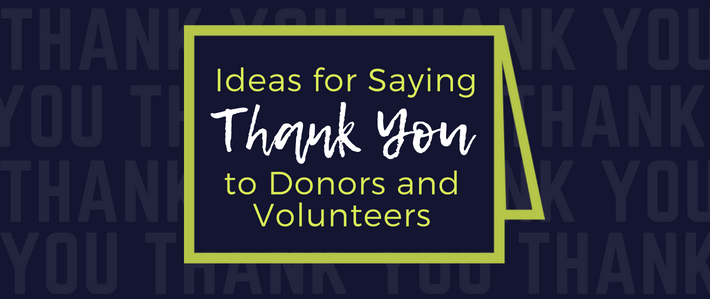
In my last post I touched on how I ditched a well-thought-out communication request form for more personal interactions with our ministry leaders. I think this idea of relationship building goes even deeper than with the leaders; it applies to each volunteer too.
Our goal as church staff members, called or not, is always to be personal and to connect. But sometimes a volunteer not seeing the bigger mission of the church can drive a wedge between what the volunteer wants to do with a specific ministry and what should be done. As a communicator, I know for me anyway that this wedge can create unnecessary friction. We want to help the congregation and pastors achieve our church goals, to do our job, and to make everyone happy. We all know that is easier said than done! Am I right?
Many times, we are approached with an idea by a passionate volunteer that we as a staff member know is totally out of left field and excuse me WHAT WAS THAT DEADLINE AGAIN, this Saturday? (Facepalm. . . . Ugh.)
So how do we avoid this wedge between the passionate communicator and the passionate volunteer? How do we convey that we really do care about what the volunteer wants to do, but now isn’t the right time?
Over the past several years working as a communicator in a church where I was first a member, I have realized that I must pause and understand where this volunteer is coming from and what exactly they are trying to achieve. But even before I do that, I have to make sure every volunteer, every member, feels comfortable enough to come to me. And the only way I can do that is by building an open relationship with each individual.
I know you are probably thinking, “WHAT? If I took time to listen to everyone’s grand idea, I would never get any work done. Do you realize how many people that would be? Oh, that one volunteer is a talker; I would never get anything accomplished. Oh she never accepts ‘no we aren’t doing that’ as an answer.” Or you are thinking, “I already know about relationships.”
Before you throw in the towel, hear me out.
Building a Relationship
We all have a lot going on in our ministries, and because of that, we might not be able to build relationships with the individuals we are serving. We want to hurry and get to our next task, or we are so engrossed in a project that we don’t look up to see what another ministry is up to.
As I mentioned earlier, it is important to build a relationship with each individual we serve. It’s important to remember that each relationship is on a different level. But the goal is to establish a trust and comfort level where these volunteers want to come to you with their ideas.
1. Be Present
The first step in this is to be present. This doesn’t mean you have to be at every activity or volunteer event. But when the opportunity presents itself, be there. Take interest in what people are doing. Take pictures, even if you don’t plan to use them right away (or at all).
Our church has a school too, so during the school year it is a busy place. I do my very best to walk the halls of not only the church but also the school. If I hear about a fun activity in the building, I grab my iPhone (no, I do not have a fancy camera . . . it’s on my wish list) to go and capture some activities. Ask questions and learn why this volunteer is so passionate about a particular ministry.
2. Listen
As a communicator myself, I sometimes think we don’t fully listen. We have a lot to talk about or, for lack of a better term, communicate! I guess we figure we have done the research, we know the mission, and we know what works, so we just want to get the message out there.
I recently started reading a book called First Impressions by Mark Waltz. It is geared more toward guests coming to churches, but the author makes a great point about listening that I think applies to relationships with all people, including our volunteers. Through listening and understanding, we may be able to come to a consensus on what is best for not only the church but also for the volunteer. And isn’t that what we are all wanting?
3. Say Thank You
Whether it is a personal note or just saying those two little words in person, saying thank you has an amazing impact. I think we get into the hustle of getting things done. Or let’s be honest—everyone has an idea they want to share. No matter how off-the-wall an idea is, at least the person came to you to talk about it.
It is always important to say thank you. Thank you for that idea, thank you for bringing it to my attention, THANK YOU.
The Real World
It’s taken me three years, but I have trained about 60 percent of our volunteers to let me know when something big or small is going on around the church. I watch the calendar and I take notes, but sometimes things come up I had no idea about. I always try to snap a picture, and I have even trained some of our volunteers to take photos and then send them to me!
Recently, our braille ministry celebrated one year of making braille bibles at Holy Trinity. I had no idea that it had already been one year and they were going to celebrate! But because of the relationship I had built with one of the volunteers, I received an email fifteen minutes before they cut the cake. Yes, I was in the middle of something. Yes, I wished I had known so maybe I could have helped make it a bigger deal. But I was thankful she emailed me. I grabbed my phone and was able to take some quick pictures and thank her for letting me know about it.
Another example is with our elders. Each month, they vote on which missions to send donations to on behalf of the church. I seriously had no idea about this! I knew we had a mission fund but wasn’t sure how it worked. Last month, one of the elders brought me the spreadsheet and said, “I think we should find a way to let our members know where the mission funds are going.” Because of my relationship with him, he felt comfortable coming to me and talking through it. He didn’t tell the pastors to talk to me; he came directly to me. We decided to put a nice insert in the bulletin and I did a three-minute video talking about each mission.
I do have times when someone comes to me with an idea that’s just not in line with what we are doing. After I listen to the individual and because of the relationship I have built with them, we are able to talk through things. I am able to say, “Right now is not a good time because we are planning to do XYZ,” or, “Let me think it over a little more and talk with the pastors,” or even ask questions like, “Do you think this will be successful with only a week’s notice?”
You Can Do It!
As communicators, I think we do ourselves a disservice by not explaining our thought processes to volunteers. Why don’t we mail a postcard for everything? Why can’t everything be on the front page of the bulletin? By building meaningful relationships with volunteers, we are able to explain these processes and procedures so these individuals understand why we do what we do.
We are often so engrossed with the many ministries that we forget to look up. We are in our groove, our process of communicating. We pick processes over people. We don’t take time to connect, which is the key to making communication more powerful.
So, take a deep breath, look up, and take time to build meaningful relationships with the people you are serving. Take the steps to connect powerful communication with passionate volunteers.
Join the conversation as we live-chat with Stacy about how church communicators can prioritize people over processes.
Thursday, August 16 at 11:30 a.m. (CDT) on Facebook







